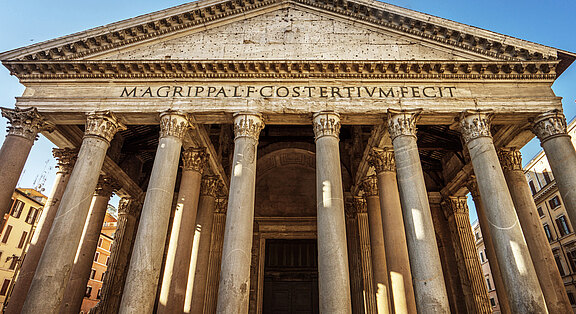
Ancient buildings from Roman times seem to be built for eternity and are obviously a very special building material.
The Pantheon is one of the most famous buildings of ancient Rome, still defying the elements after almost 2000 years. Numerous amphitheatres such as the Colosseum, huge aqueducts and harbour facilities are just as old today. In Spain, Greece and Turkey, the sturdy, millennia-old buildings of the Romans can also be found. Modern concrete buildings, on the other hand, only have a lifespan of 100 years, while our motorways and bridges have only lasted 50 years.
We continue our research - for the future of generations to come
While modern concrete is mixed in such a way that chemical changes are suppressed, the Romans favoured the opposite. The difference lay not only in the powerful "opus caementicium" (ancient Roman cement), which still holds together the water or sewage supply of Mediterranean cities today, even below ground. There are other ingredients that account for the stability of ancient buildings. The different forms of lime (burnt or slaked lime), as well as the use of lime that has been sumped for years, also make this possible.
However, these buildings are not only relevant from a historical and aesthetic point of view. Roman concrete could also make a contribution to reducing today'sCO2 emissions.
